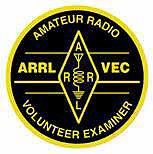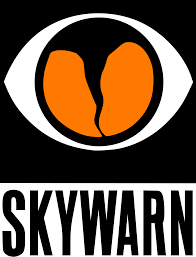Many National Weather Service offices in the U.S. include Amateur Radio as a part of their operations plan, and most of those utilize a linked repeater network of some sort. We’re going to cover the general concept of a linked repeater network as well as how they work, and why local weather nets are often held on non-network repeaters.
A linked repeater network is a coordinated group of repeaters that rebroadcast radio transmissions picked up by other repeaters on the network, allowing ham radio operators hundreds of miles apart to communicate using a simple handheld, mobile, or fixed base radio. As a result, the NWS can keep up with weather conditions over a broad area, and operators can be forewarned of incoming weather conditions that may require local monitoring.
So, how do linked repeaters actually link? Linked repeaters have a 2nd radio interfaced with the repeater’s main radio, often called a “remote base”. This allows a signal coming in from the Remote Base to be transmitted by the repeater’s main radio and a signal coming in on the repeater’s main radio to be rebroadcast on the Remote Base.
The Remote Base is programmed just like we would program our own radios to communicate with a repeater, with the repeater’s frequency, offset, and tone. To the repeater being linked to the linking repeater looks like any other radio communicating with it.
Say, for instance, that the WD4LUQ repeater on 146.895+77 in Union wanted to link to the Fayetteville repeater. The “remote base” would tune to the Fayetteville repeater’s frequency of 446.600 with a positive offset and CTCSS of 77 just like we would do on our own radios if we wanted to communicate with their repeater.
In some systems may have a Remote Base configured for just one repeater, others may have a few channels that can be switched between using DTMF, and more sophisticated Remote Bases are fully programmable remotely, allowing them to change to pre-programmed channels on the fly, or even be custom configured on the fly.
Another way to link two repeaters might be for each of the two repeaters have their own Remote Bases which would communicate over their own set of frequencies, perhaps using lesser used 220mhz frequencies.
In any case, when it comes time to bring up the linked repeater net, each repeater enables their Remote base, which now allows each of them to echo the traffic of the other. The 2nd repeater then links to yet another repeater, the process continuing until all the repeaters in the network are linked together.
Because at any given moment there may be a repeater offline, many repeater operators have backup channels programmed into their Remote Base so they can link to a different repeater and mend the broken link in the network.
These linked networks must be coordinated, otherwise a series of linked repeaters may “loop” back to one of the other repeaters already in the chain, causing the repeaters to continue to feed back into the network, causing endless transmission on the network.
So, why not link the Carrollton (W4FWD - 146.640-131.8) and other repeaters onto the NWS network? Well, for starters, it complicates coordinating the NWS network. For another, the more repeaters on the network the more “noise” from random users bringing up a repeater gets generated. Additionally, to keep the network from being congested with chit-chat, random operators calling out not knowing the linked network is up, and traffic irrelevant to the NWS being broadcast. It also limits our ability to utilize our repeater if we must minimize traffic to avoid introducing congestion on the larger linked network while dealing with a local situation.
The NWS expects only severe weather to be reported, not general weather reports. Again, this is to avoid creating congestion on the linked repeater network and leave the network clear for reporting potentially life-threatening conditions. Having said that, there are times where the NWS may request reports of current conditions in a given area, whether they are severe or not; this is usually because they see confusing or conflicting information on the Doppler RADAR.
The advantage of using our repeater for tactical traffic, off the linked repeater network, is we can share weather reports and pass non-weather related traffic when there is a lull in activity. By running a tactical net on our repeater we can communicate more freely, orchestrate our weather data collection efforts, and pass weather information that may be good to know for tactical reasons but irrelevant to the NWS.
Ideally, when running our own local weather net we would appoint a liaison to the NWS net, usually somebody with a dual VFO radio who can monitor both nets and relay relevant information from one to the other. The NWS has also been known to check in on the Carrollton repeater to directly request information.




